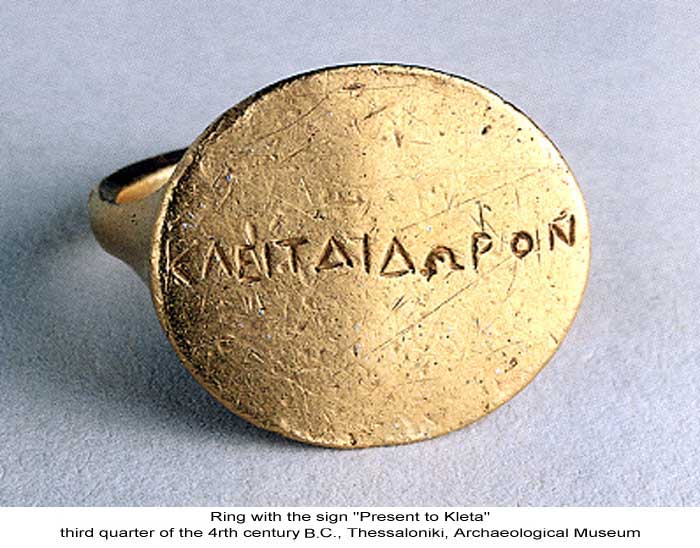Ancient Greek Golden Jewellery
The first jewellery that man ever wore are lost in the depth of pre-historical times and it is impossible to trace them. So, research hasn't yet showed if jewellery use preceded the use of clothes or the opposite. The psychological reasons which led to the use of jewellery is also unknown whether it was to attract the opposite sex, the desire to be more beautiful or the need to be protected with the help of talismans. Indeed, it has been proved that jewellery was used to attract good powers or to turn away the bad.
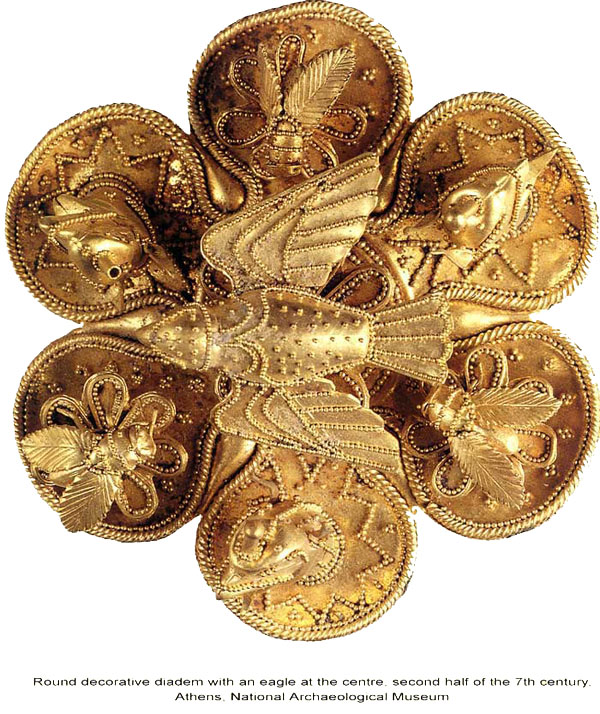
At first, jewellery was created by unprocessed objects such as animal teeth, shells, nuts, peculiar rocks and fruit stones. It is logical to think that jewellery was firstly created in countries where there was an abundance of gold. The dominant role of Asia and Egypt in this domain, jewellery production, is due to the above-mentioned reason although the oldest golden jewellery have been discovered in the Balkan area. With the creation of metal jewellery the magical character of natural jewellery didn't cease to exist. This was the fact with golden jewellery since gold was not wearing out let alone the fact that it was always shiny, leading people to believe that it had supernatural powers. With the years passing by, when religion was separated from magic the magical characterizations of the jewellery were diminished to some extent. In Greece for example, research has shown that some iron rings which have been discovered in Mycenaean tombs were thought of as magical since iron was not yet a part of the everyday life of people, along with some stones used for stamping that were worn as talismans.
After the destruction of the magnificent Mycenaean centers there were economic difficulties and that is why the jewellery samples that we have from this era are only a few, mainly from copper, a few iron and only the minimum volume is golden. Since gold is not in abundance in Greece, goldsmiths and their art cease to exist. After the 9th century things changed again since the Greeks acquired new contacts with the gold markets of the East. So, during this era the history of gold starts again. The 8th century BC can be characterized as the century of its peak, mainly in Attica.
During the time of the Homeric poems the jewellery are either well-shaped objects of everyday use such as brooches and pins or ornaments which underline beauty. During the seventh century the talisman character of the jewels re-surfaces, and their powers seem to be valid for the person wearing the jewel or for the dead in their other lifetime to which the simple man didn't stop believing. This notion will remain alive until the end of the antiquity when it will be transferred to crosses and other forms of jewels with Christian symbols.
The jewels found in tombs are divided in two big categories. The ones worn in real life and their substitutes. The second category was used exclusively for burials and they were copies of the real ones which were replaced inside the tombs when the real jewels could not be used for economic or other reasons. The custom of burying the dead with their jewels was very strong since jewellery were not used in the everyday lives of people but during a special appearance or in feasts and especially on wedding days. Real jewellery were either dedicated to some alter or buried in some tomb anyhow. That is why we often meet jewels decorated with themes referring to the after life or immortality.
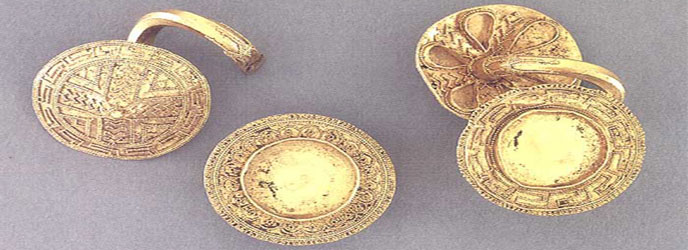
Gold in general is a rare metal. Few are the places on earth which can show significant quantities of gold and Greece is poor in the specific metal too. The main locations where gold is extracted are Africa and Asia.
In this section which is dedicated in the ancient Greek golden jewellery you will have the opportunity to see many different kinds of jewels such as earrings, bracelets, rings, necklaces, wreaths, diadems, pins and broaches which are real works of art.
Wreaths
The oldest wreaths mentioned in scripts correspond to the second half of the 5th century and refer to honorary accolades of important people, such as winners in athletic or other events.
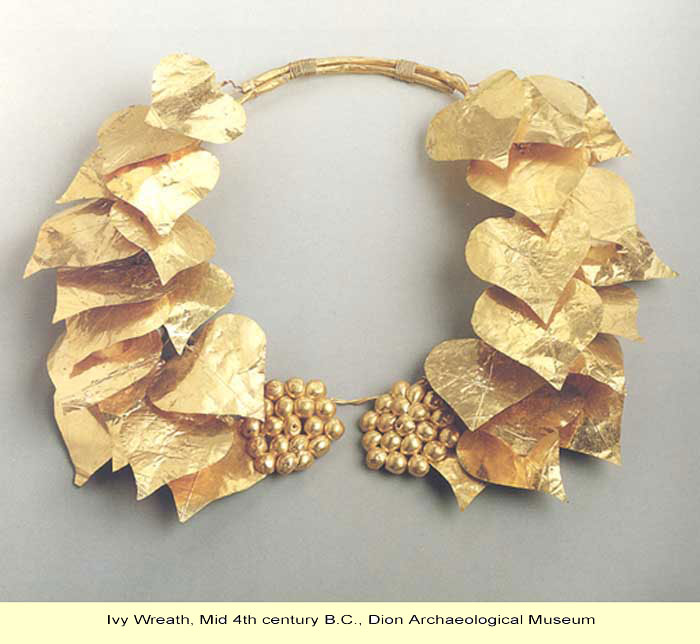
Diadems and Tiaras
The word diadem characterizes the crowns of royal families which were basically weaved head bands. Alexander the Great received one after he won Darius the 4th and became a king. The diadems received the form given to them today a bit later and they are mainly golden and often found in tombs.
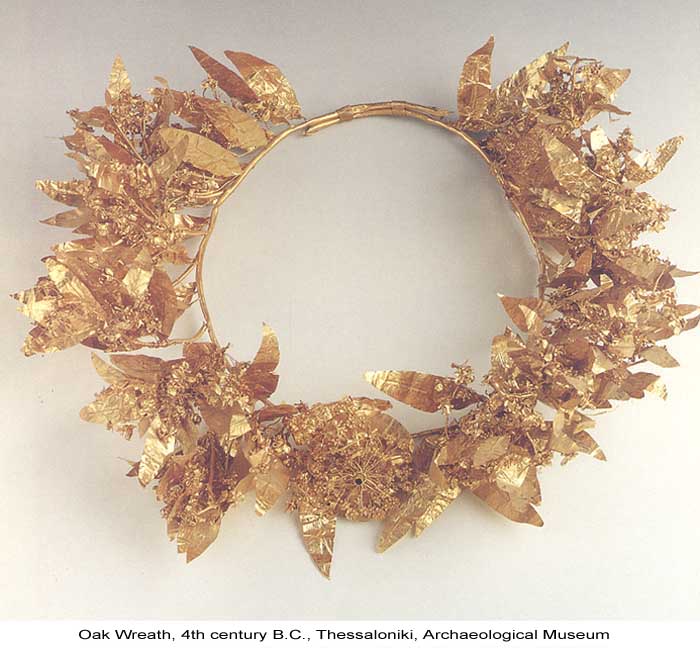
Earrings
Along with the necklaces the earrings are those jewels which present the biggest variety. Many earrings have been found in peculiar shapes that still make us wonder how they could have been worn. Today, we can say that most of the ancient earrings must have been worn while hanging on a ring which pierced the ear, mostly made of silver or copper. Most of those earrings could not be preserved due to metal oxidation.
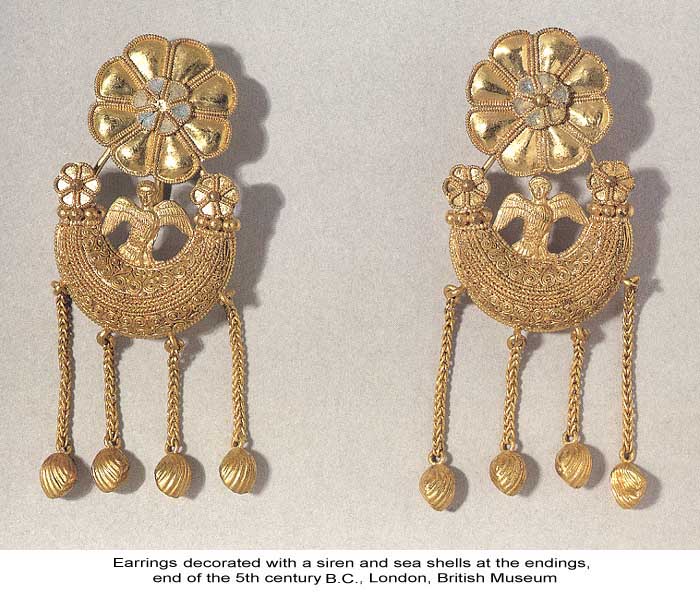
Necklaces and Talismans
In most cases the necklace is a total of small similar or dissimilar items hanging from a string at first from the neck and later from the clothes with pins and broaches right in front of the chest.
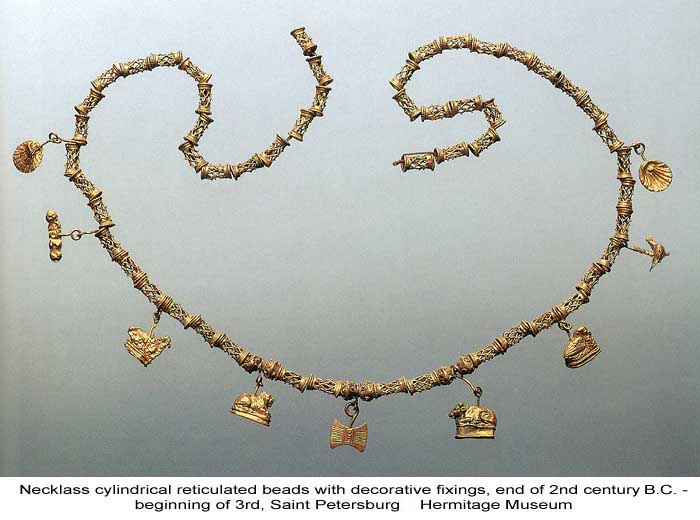
Pins
Pins are already known from the Age of Copper. During the pre-historic times we can find pins in different sizes but their use hasn't been clarified yet. Those having been found in pairs are associated with the holding of clothes while those found in a unique piece were probably used as decorative articles or worn on the hair combined with diadems.
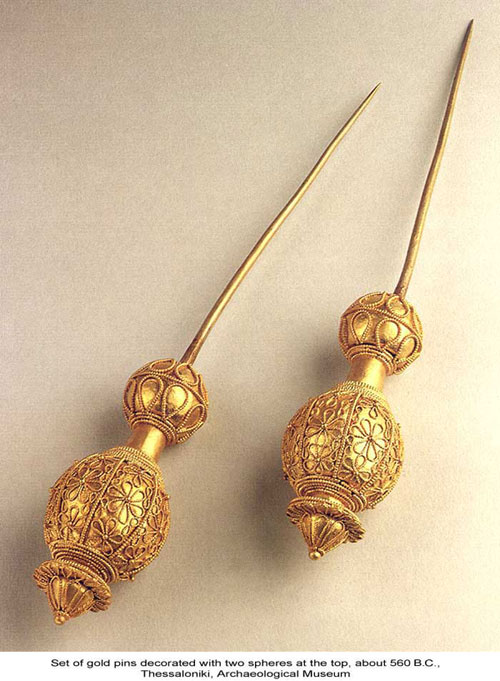
Broaches
From all the kinds of jewellery the broaches are the ones which made their appearance last. They were first found during the Mycenaean years at the same time with the pins used to hold women's clothing in place, on the shoulders. They served the same purposes and they may have been used to hold the peplum's side closed when the dress was held on the shoulders by pins.
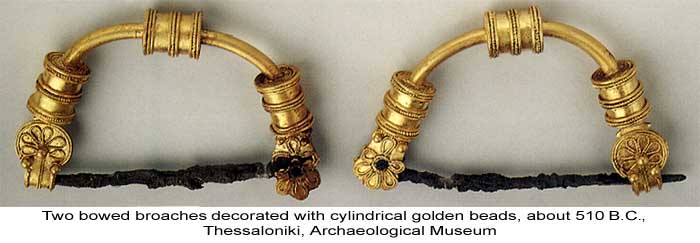
Bracelets
The bracelets in antiquity were mainly used in both hands over the elbow or around the wrist as today. Even the copper bracelet findings are not many. Their appearance is simple at first, made from wire or more solid materials which formed a spiral, multi-spiraled or open with decorated or non-decorated edges.
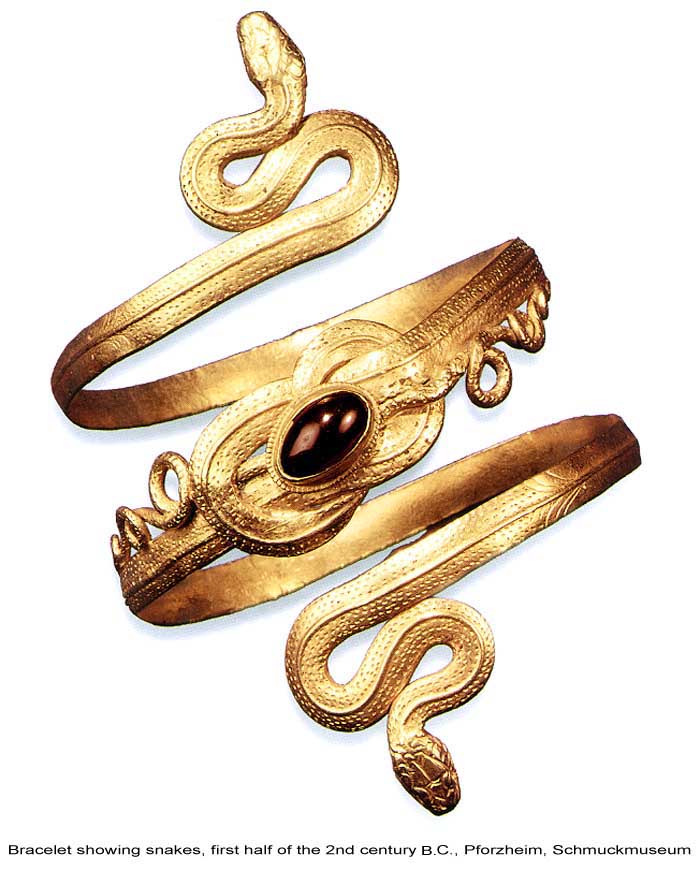
Rings
Rings are among the oldest jewels ever worn by people. In simple form made from bands are known even from the Neolithic era. During the 10th but mostly during the 9th century rings were made rich in curving decorations used probably only to be buried in tombs or offered in alters.
